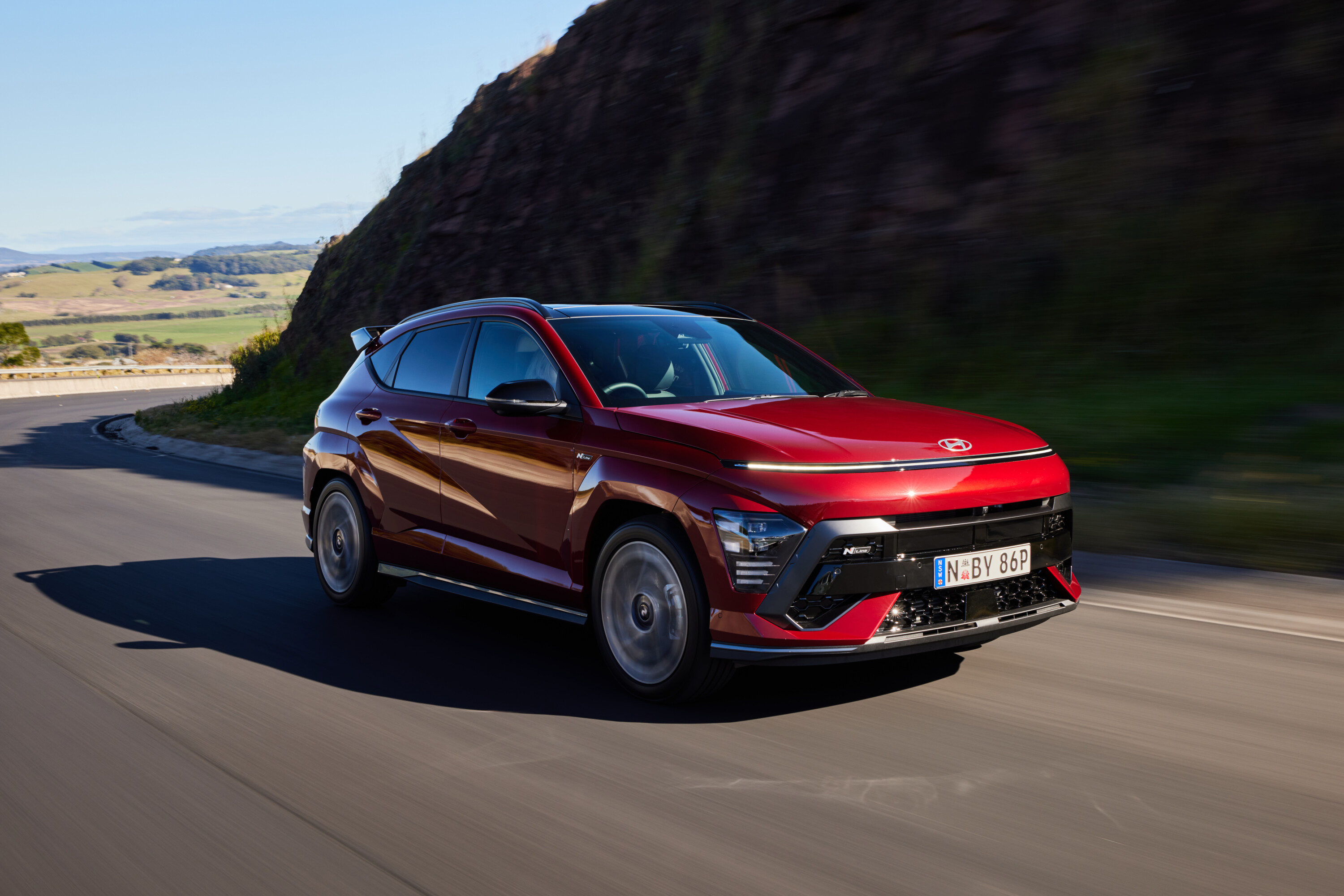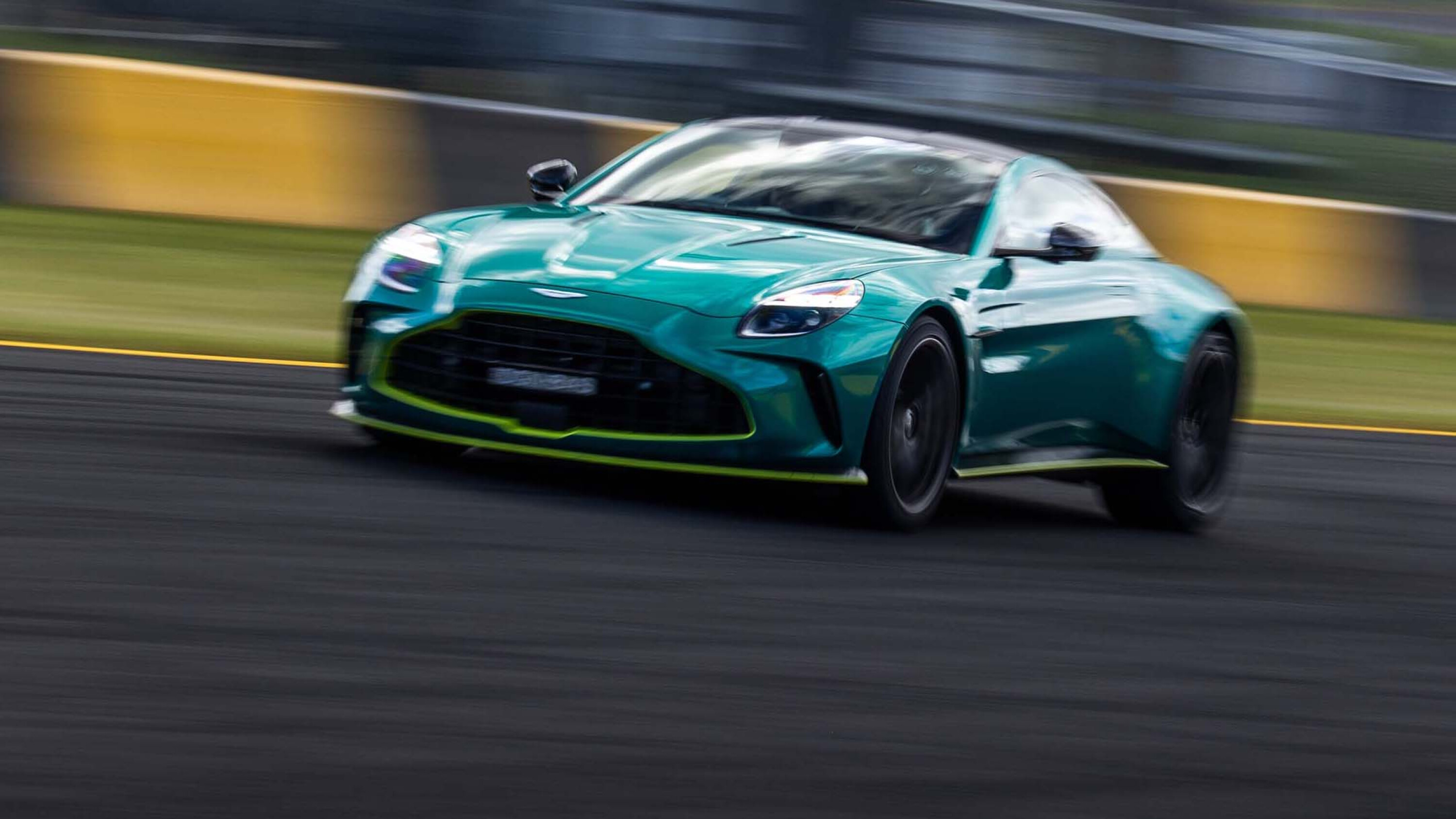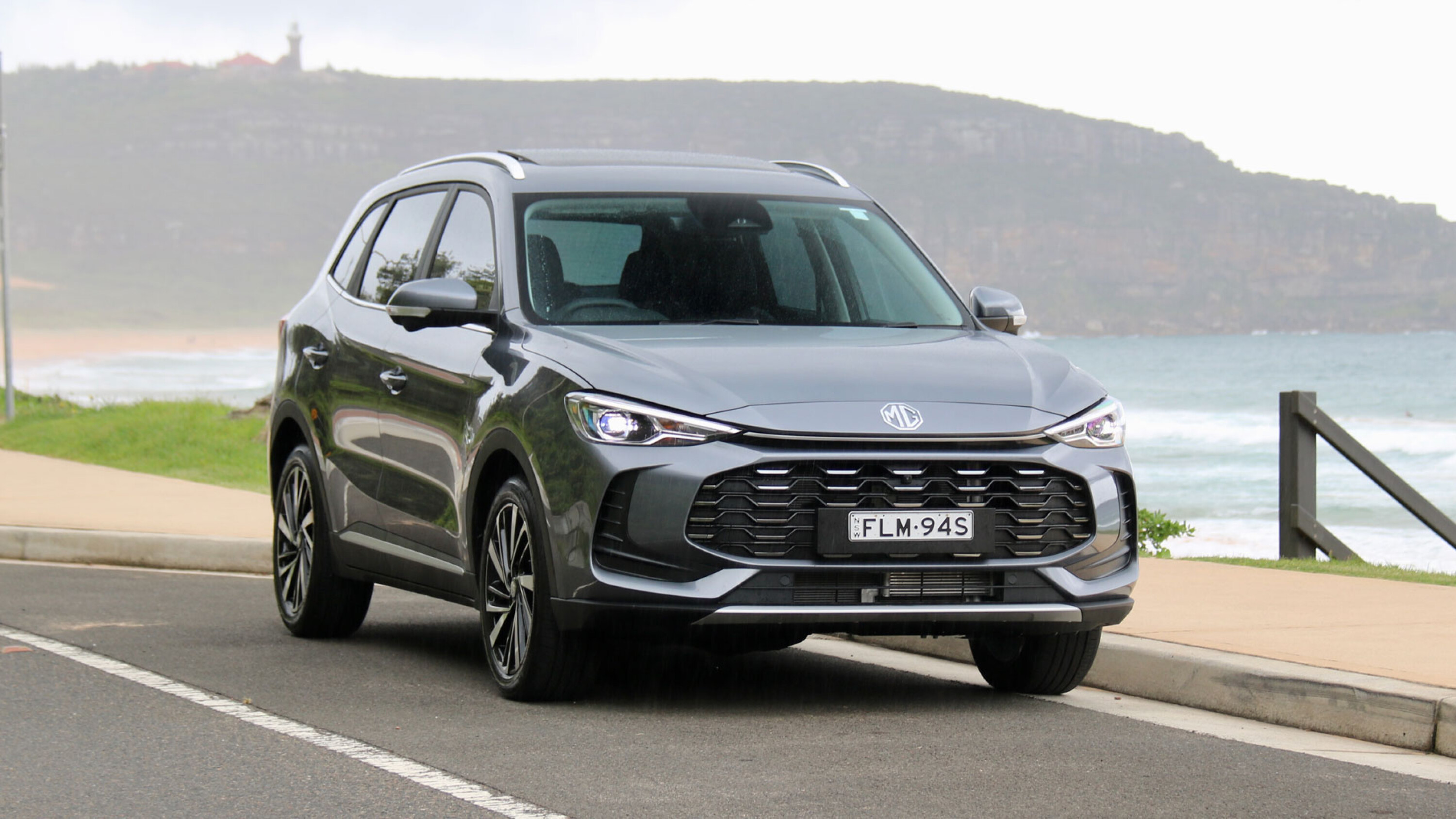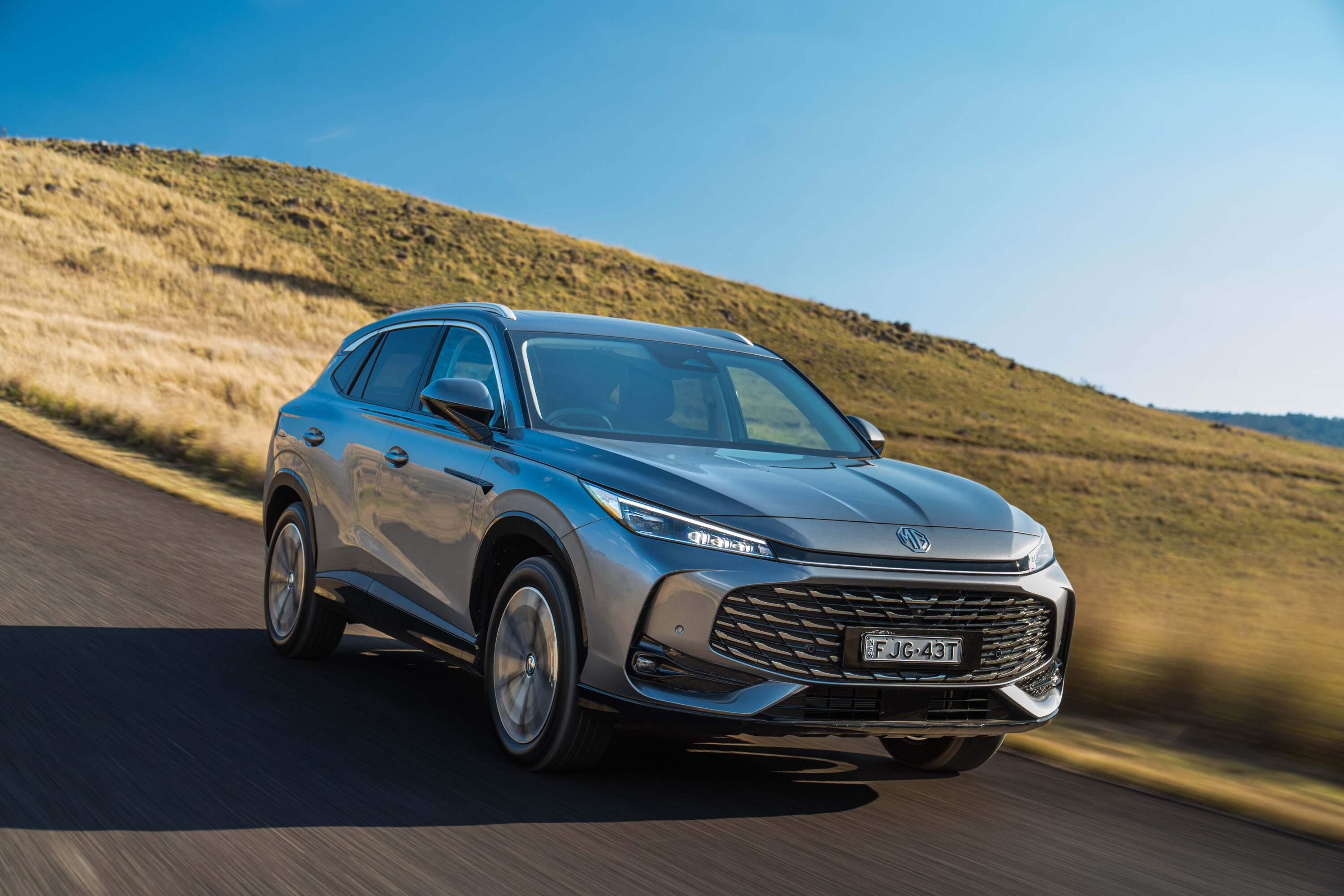Score breakdown
Things we like
- Excellent use of cabin space
- Attractive design
- Loads of equipment
Not so much
- Pricey
- Performance doesn’t align with the aesthetics
Hyundai’s presence in the small SUV segment has, since the introduction of the first-gen Kona back in 2017, been a bit on the tiddly side.
Not in terms of sales, mind you – it’s always been a popular thing – but rather in terms of its physical size, which trailed many of its segment rivals.
But the arrival of a new-generation Kona fixes that. It’s bigger, flashier and decked out with more equipment than before, but some compromises come with that – ones that impact your hip pocket. Let’s dive into that.

JUMP AHEAD
- How much is it, and what do you get?
- Interior comfort, space and storage
- What is it like to drive?
- How much fuel does it use?
- How safe is it?
- VERDICT
- Specifications
How much is it, and what do you get?
We start on a bit of a negative slant because price is perhaps where the Kona loses some of its lustre.
At a retail price of $46,500 (before on-road costs) in N-Line Premium form with the turbo-petrol AWD mechanicals, the Kona’s price tag is on par with that of, say, a seven-seat Nissan X-Trail ST-L. Add $1500 if you want a panoramic glass roof.
But you do get a lot of gear for your spend. Besides the racy body kit ad 19-inch alloys that are part of the N-Line spec, this configuration also comes with heated, ventilated and power-adjustable front seats, heated outboard rear seats, power tailgate, a premium audio system, blind-spot camera monitoring, a 3D parking camera view, remote monitoring via a phone app, heated/power-folding wing mirrors, integrated sat-nav and dual-zone climate control. There’s even more than that too – see the spec table below for the full equipment list.

| 2023 Hyundai Kona Premium standard features | |
|---|---|
| 12.3-inch infotainment screen | Remote smart parking assist |
| Integrated sat-nav | Ambient interior lighting |
| 12.3-inch instrument panel display | Powered tailgate |
| Heated and ventilated front seats | Paddle shifters |
| Heated outboard rear seats | Self-dimming rear view mirror |
| Leather/Alcantara upholstery | 19-inch alloy wheels |
| Dual-zone climate control | Smart key with remote start |
| Power-adustable front seats | 4x USB-C charge ports (2x front, 2x rear) |
| BOSE 8-speaker audio | LED projector beam headlamps |
| DAB+ radio tuner | Full-width front daytime running lamp |
| 3D parking camera view | |
Interior comfort, space and storage
The inside of the Kona is a nice place to be – particularly in N-Line Premium spec.
The seats are upholstered in a combination of grey Alcantara and black leather with red contrast stitching, and they hug the torso with a pleasing squeeze. Perforated leather wraps the steering wheel grips too, which also boasts a red contrast stitch, and a red accent stripe bisects the dashboard.
It presents very well, however, run your fingers across the dash and door card uppers and you’ll find hard plastic, not soft-touch materials. It’s not a total vibe-killer – they don’t look shiny and unpleasant, after all – but at this price point it’s not unreasonable to expect nicer materials in these areas.
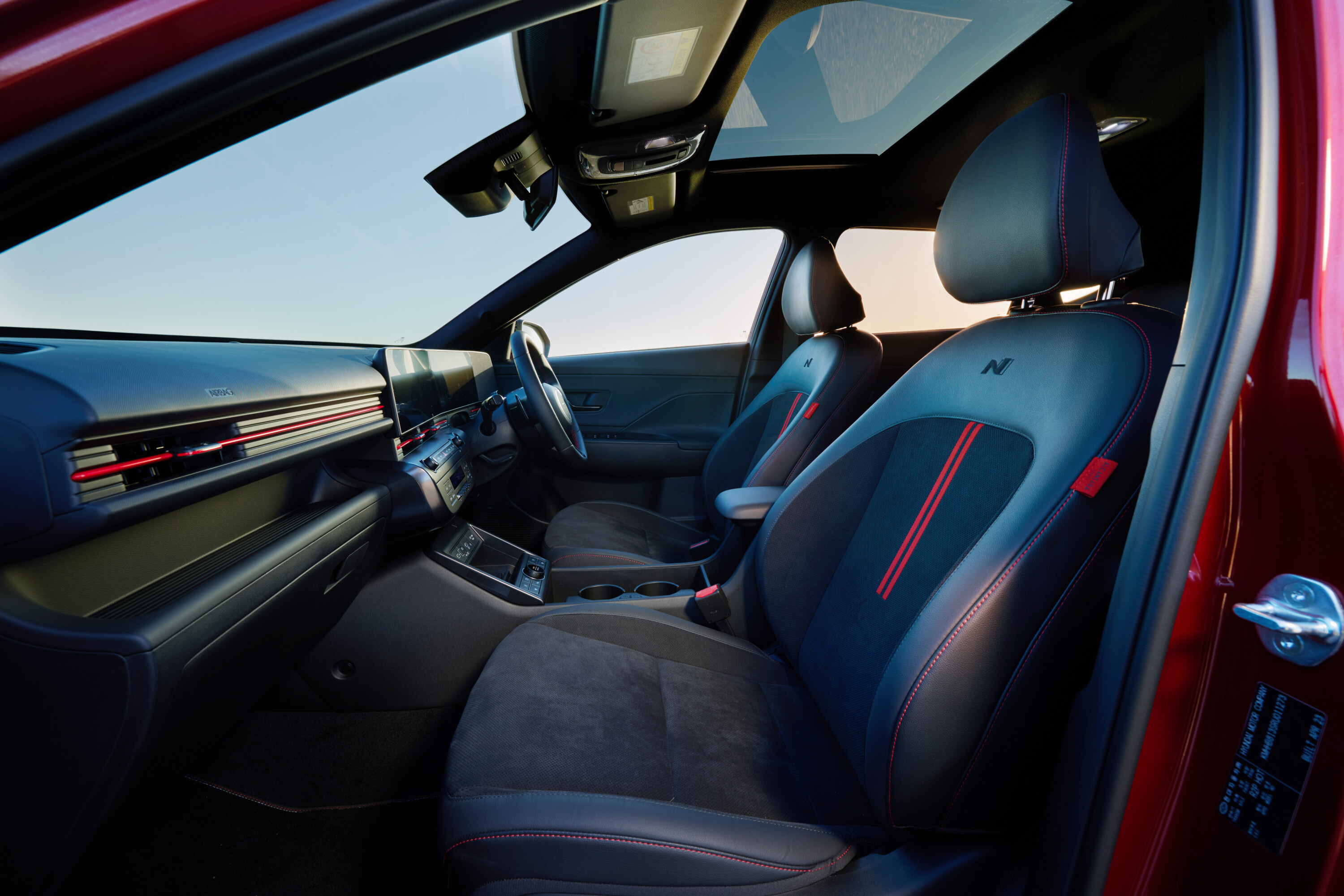
With the flip-out cup holders retracted and the divider removed, slotting in a full-size laptop, large handbag or even a rotisserie chicken is easy
But the Kona wins us back with what’s between the front seats. A long open-topped tray stretches from the base of the centre stack – where a generously-sized wireless phone charging pad sits among the ventilation controls and drive mode selector – all the way to the rear seat air vents, with removable trays and dividers to help you manage cargo.
With the flip-out cup holders retracted and the divider removed, slotting in a full-size laptop, large handbag or even a rotisserie chicken is easy, greatly boosting the Kona’s convenience factor. Two things enabled this feature: a 25mm increase in width compared to the old model, and the relocation of the gear selector to the steering column (in all models bar the base Kona).
In the back, there’s ample space. To address criticism that the first-gen Kona offered meagre second-row passenger accommodation, Hyundai stretched the wheelbase of this new model by 60mm and extended the overall length by 145mm.
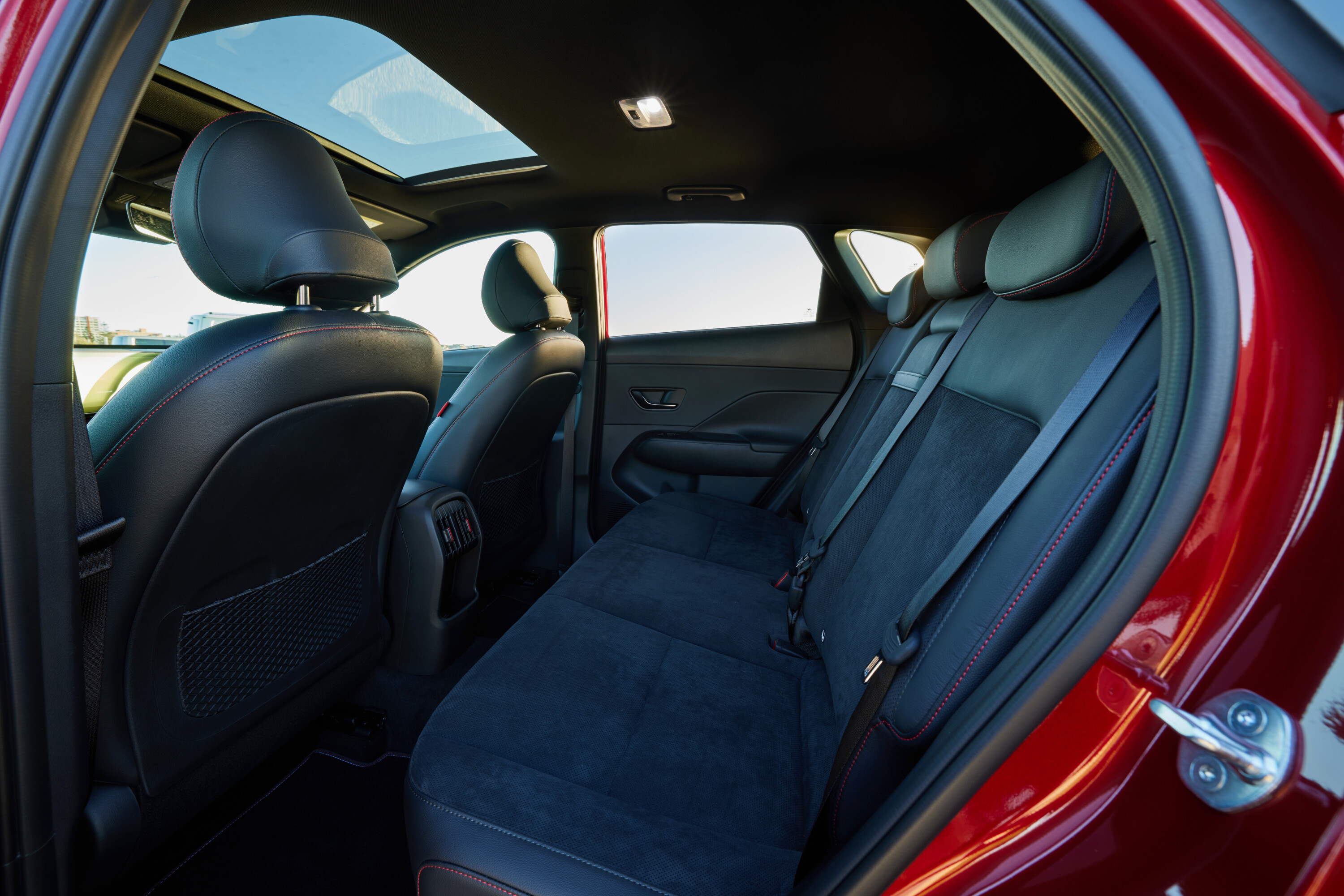
That creates 77mm more back-seat legroom, and it’s used to good effect here.
A two-position backrest also gives your passengers a comfortable degree of recline for those long-distance trips, and the aforementioned heated rear seats are a great feature to have.
Boot space also benefits from the dimensional growth – at 407 litres with the rear seats up, there’s plentiful room for cargo. The boot floor can also be dropped to a lower position to liberate a few more litres, and if you’ve got tall cargo there’s even a dedicated stowage position for the parcel shelf to keep it out of the way.
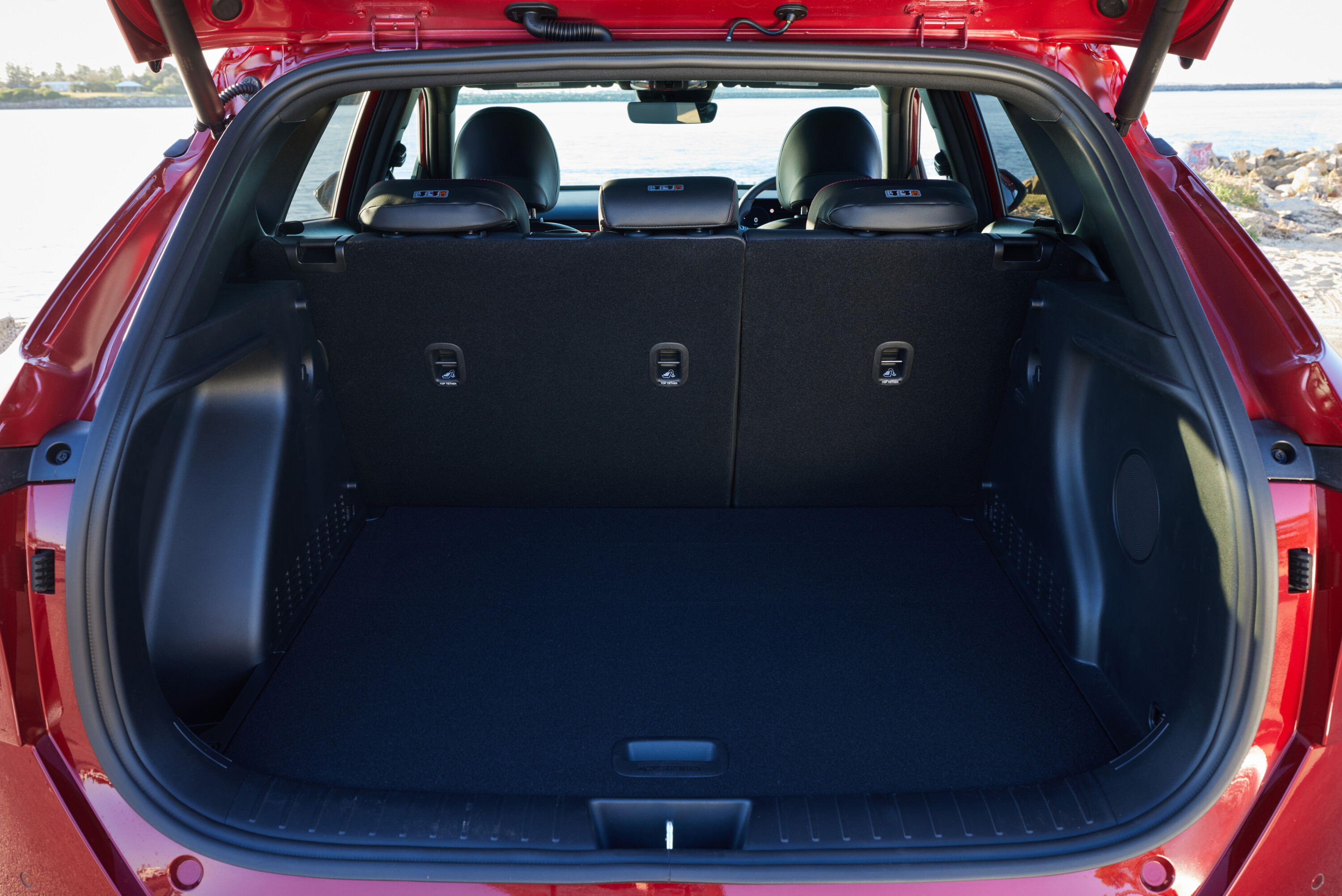
What is it like to drive?
Locally-developed suspension tunes are no longer the go-to strategy for Hyundai Australia when it comes to tailoring ride and handling of new cars for our roads.
Our country still receives a unique suspension calibration, but now it’s just selected from a global ‘menu’ of suspension bits rather than developed from scratch by Hyundai’s Australian engineering team.
Does that result in a compromise? Arguably not, for the new Kona strikes a good balance been comfort and cornering composure that should suit the majority of Aussies. There is one potential issue, though: the 1.6-litre turbo Kona N-Line doesn’t feel sporty enough to match its athletic looks.
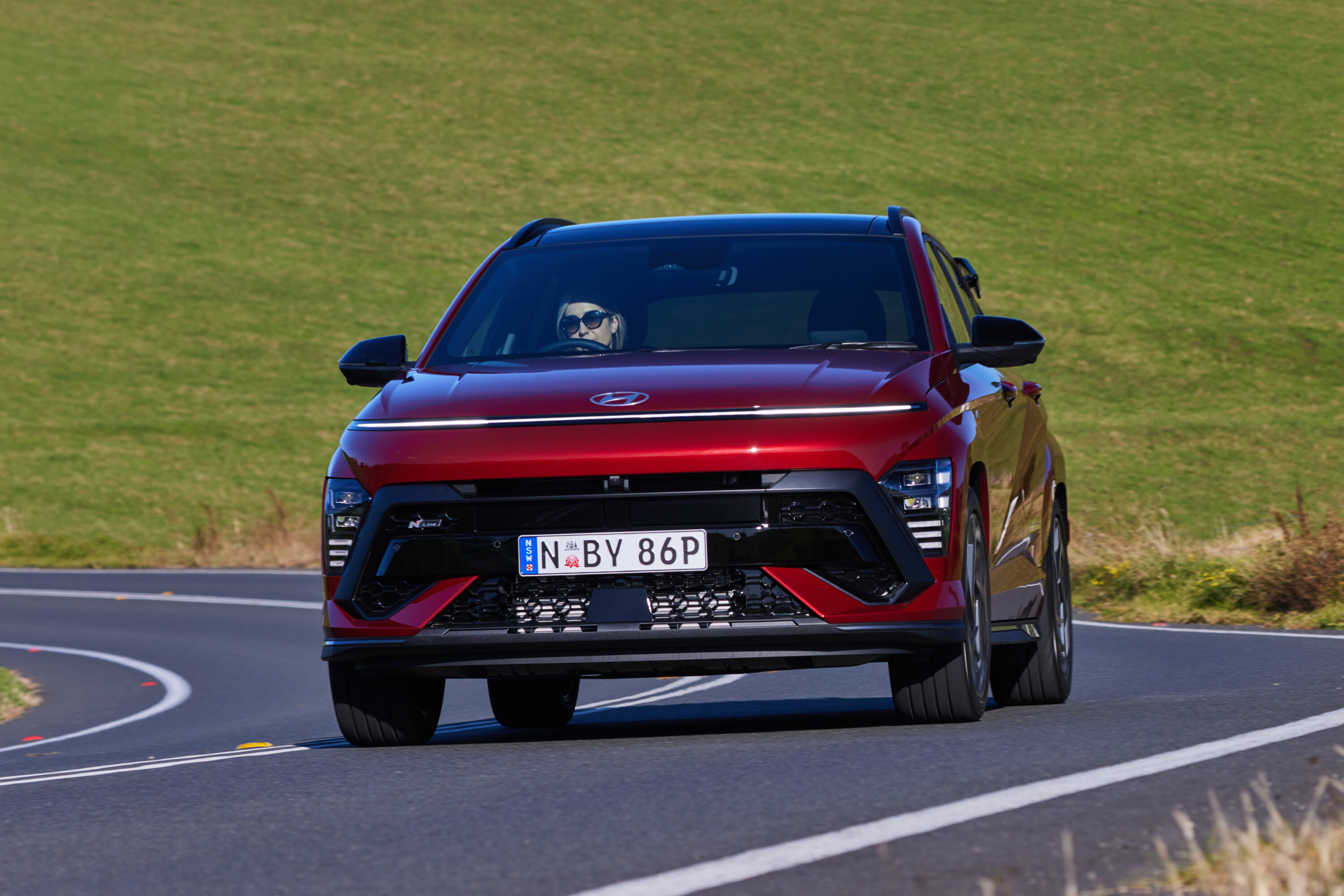
It works pretty well in town and on highways, but we would have liked a little more engagement factor
Sure, the turbo might receive a more sophisticated multi-link rear suspension set-up rather than the simple torsion beam axle rear end of the naturally-aspirated 2.0-litre and the upcoming hybrid, but the spring and damper settings are skewed towards “soft” more than “sporty”.
The engine lacks a sharper edge too, even when the drive mode dial is turned to Sport, though the critical numbers of 146kW and 265Nm are indeed plentiful enough. It works pretty well in town and on highways, but we would have liked a little more engagement factor to match the aggressive styling.
If any of the terms in this section have left you scratching your head, these articles will help bring you up to speed!
- What is a Powertrain or Drivetrain?
- Power vs torque
- Car suspension explained
- Automatic transmissions (‘gearboxes’) explained
- Chassis control systems explained
- Car vs Ute vs SUV: How the vehicle you buy should guide the way you drive
Hyundai claims an average fuel burn of 7.6L/100km but during our launch drive, we couldn’t edge it under 8.6L/100km.
Granted, we were pushing hard over some fairly dynamic roads, but the route included a fair chunk of highway cruising that should have balanced some of that out. More accurate real-world numbers will have to wait until further testing.

How safe is it?
The new Kona has yet to be rated by ANCAP, however standard safety features on this top-spec variant include seven airbags (including a front-centre bag), autonomous emergency braking with junction mode and reversing mode, blind-spot cameras, driver attention monitoring, lane-keep assist, rear cross-traffic alert, front and rear parking sensors, a 3D parking camera view, and adaptive cruise control.
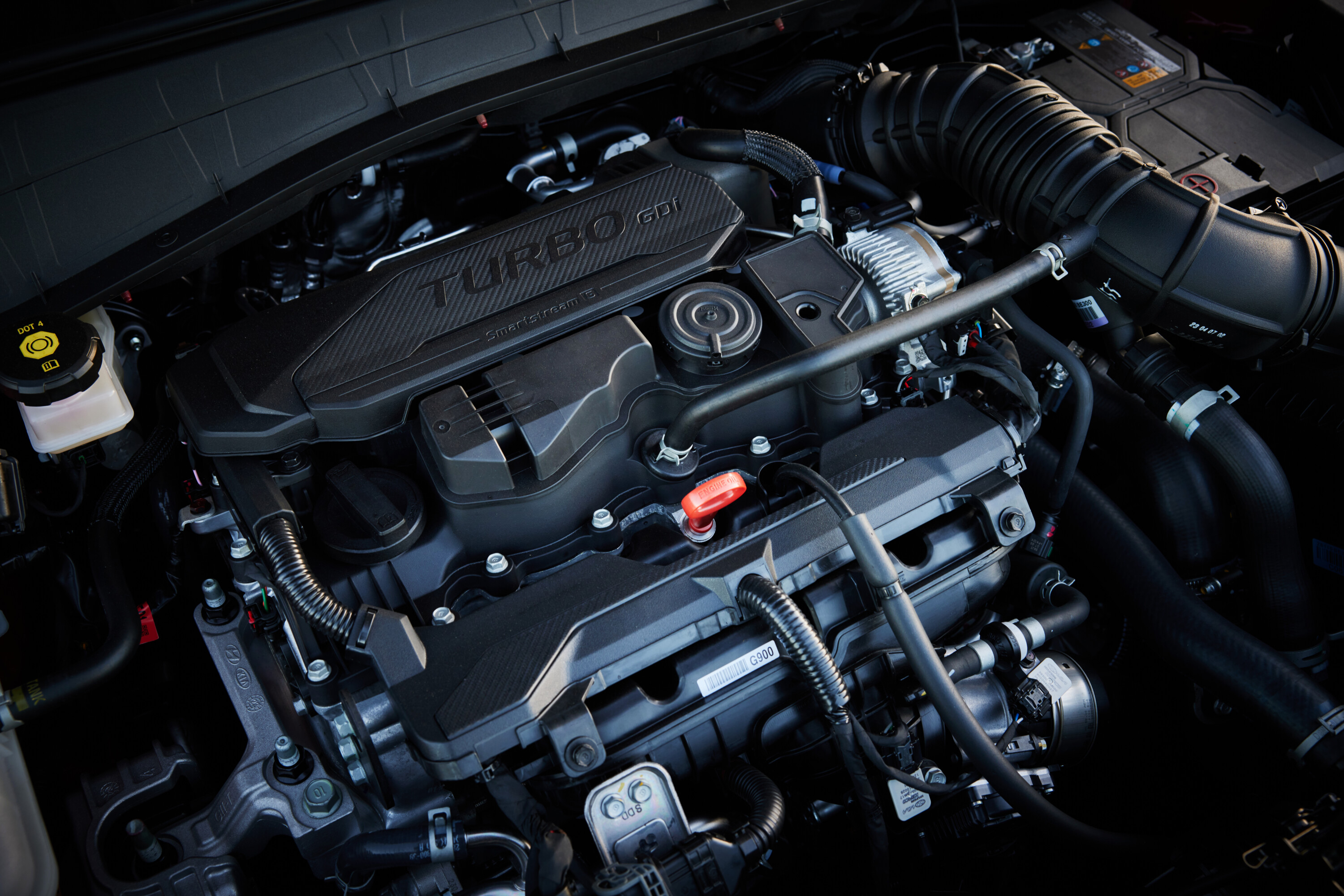
VERDICT
If there’s one fault of this particular Kona spec, it’s that it doesn’t deliver on the sporty pretensions of its exterior.
However, it delivers pretty much everywhere else – and particularly when assessed from a day-to-day usability point of view. It’s a good size, filled with gear and has a likeable mechanical package, but that sticker price will be hard for some to get their head around, and understandably so.

| 2023 Hyundai Kona N-Line Premium specifications | |
|---|---|
| Powertrain | 1.6-litre (1598 cc), inline 4-cyl turbo-petrol |
| Max power | 146kW @ 6000rpm |
| Max torque | 265Nm @ 4500rpm |
| Transmission | 8-speed automatic |
| Body | 5-door, 5-seat small SUV |
| L/W/H | 4385mm/1825mm/1590mm |
| Wheelbase | 2660mm |
| Boot space | 407/1241 litres |
| Weight | 1450kg |
| Suspension | Front: MacPherson strut, Rear: Multi-link |
| Steering | Column-mounted motor-driven power steering, rack and pinion |
| Brakes | Front: 305 mm x 25 mm ventilated disc, Rear: 284 mm x 10 mm solid disc |
| Wheels | 19-inch alloy |
| Tyre size | 235/45 R19 99V |
| Price | $46,500 + on-road costs |
Score breakdown
Things we like
- Excellent use of cabin space
- Attractive design
- Loads of equipment
Not so much
- Pricey
- Performance doesn’t align with the aesthetics
We recommend
-
 News
News2024 Hyundai Kona pricing and features: Petrol, hybrid, N Line
Hyundai has locked in pricing and features for the second-gen Kona, including the hybrid!
-
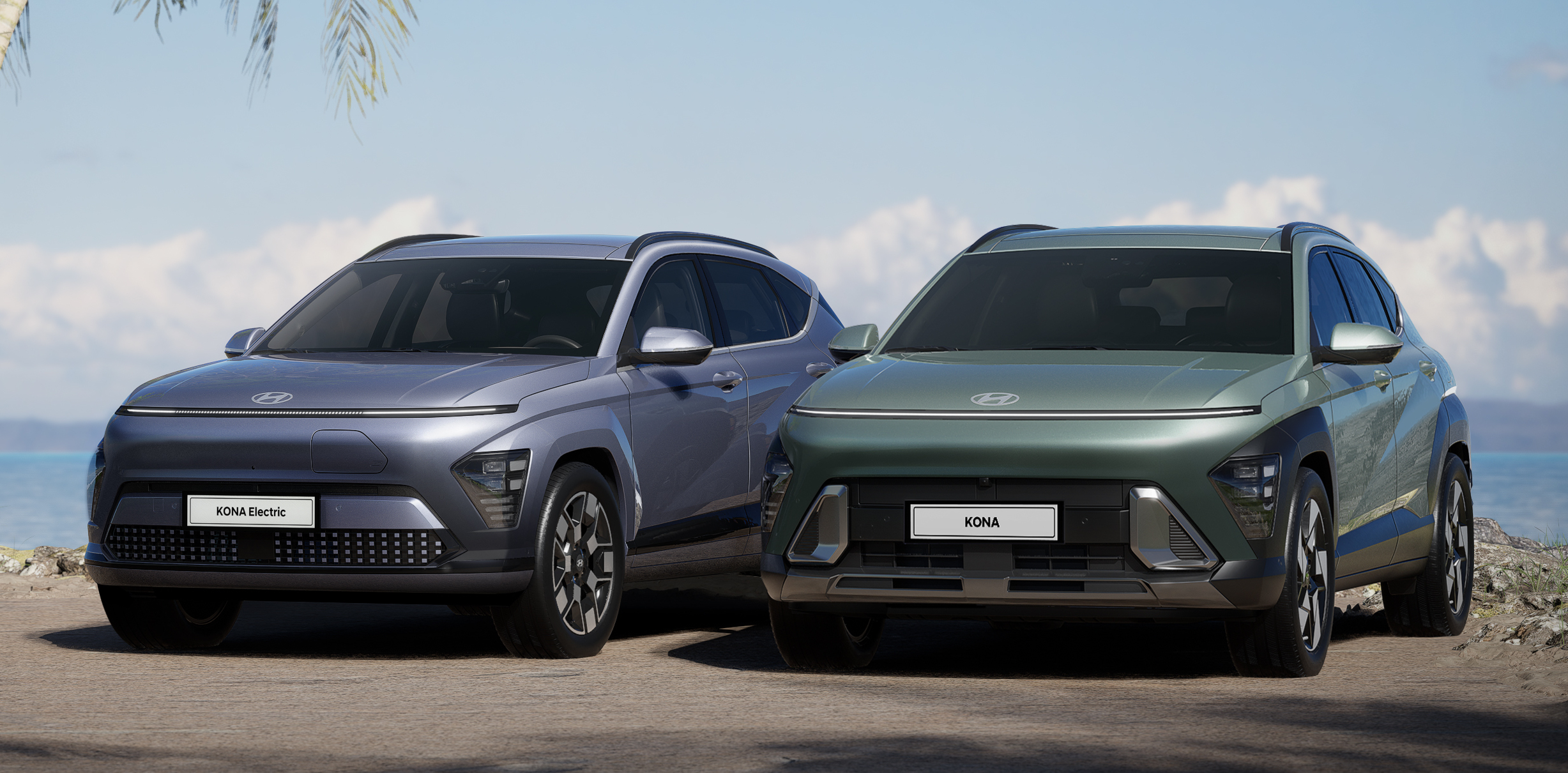 News
News2024 Hyundai Kona revealed: Everything we know so far
The new electric-forward Hyundai Kona small SUV is due in the middle of this year, and it looks a whole lot sharper than before
-
 News
News2025 New Car Calendar: All the new cars coming to Australia
Take a look at our list of what is expected to launch in Australia in 2025 – plus those we might not see locally just yet

